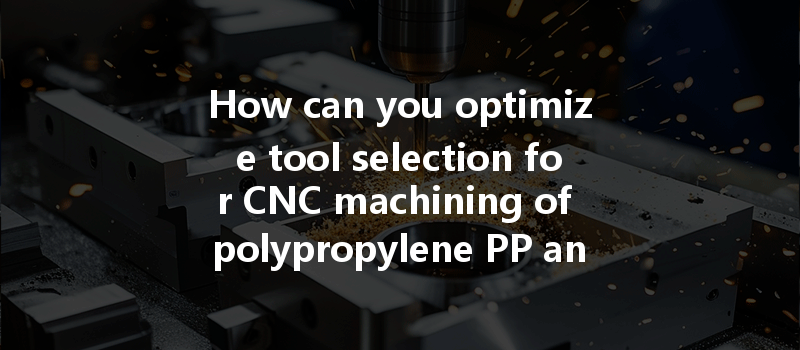Opening
Did you know that the global demand for engineering plastics, including polypropylene (PP) and polyoxymethylene (POM), is poised to exceed 50 million tons by 2025? As industries increasingly adopt these versatile materials for their lightweight, durable, and chemically resistant characteristics, the importance of effective CNC (Computer Numerical Control) machining becomes paramount. One of the critical elements of successful CNC operations lies in the selection of the right cutting tools. In this comprehensive guide, we’ll dive deep into optimizing tool selection specifically for machining PP and POM, tackling challenges and providing practical solutions to improve your CNC processing efficiency.
1.1 Overview of Polypropylene (PP)
Polypropylene (PP) is a thermoplastic polymer used extensively across various industries due to its excellent chemical resistance, lightweight nature, and versatility in application. It can be used for automotive parts, packaging, textiles, and more.
1.2 Overview of POM Plastics
POM, also known as acetal, is a highly crystalline thermoplastic with a high tensile strength and rigidity, making it ideal for precision components such as gears, bearings, and other complex machined parts. Its low friction properties also make it suitable for applications that require movement.
2.1 Thermal Effects

Both PP and POM exhibit different thermal properties, affecting machining temperatures. Overheating can lead to thermal degradation or warping, so understanding and managing these thermal effects is crucial.
2.2 Chip Formation and Removal
The chip formation characteristics of these plastics differ significantly. For PP, the chips may tend to be stringy, while for POM, they form into small, manageable pieces. Efficient chip removal strategies are vital to preventing re-cutting and ensuring smooth operations.
2.3 Surface Finish Requirements
Achieving the desired surface finish can be challenging in CNC machining. Both PP and POM require different finishing processes to achieve the required aesthetics and frictional properties of the finished product.
3.1 Types of Cutting Tools
When machining PP and POM, various cutting tools can be used based on the application, including end mills, drills, and inserts. Understanding which tool suits your machining needs is essential.
3.2 Tool Geometry and Design
The geometry of the tool—such as the rake angle, clearance angle, and number of flutes—plays a critical role in how effectively it will cut through the material.
3.3 Tool Material and Coating
Common tool materials include high-speed steel (HSS), carbide, and cobalt. Coatings such as TiN (Titanium Nitride) or TiAlN (Titanium Aluminum Nitride) can enhance tool life by reducing friction and wear.
4.1 Recommended Tool Types
For machining PP, a high-speed steel end mill with a negative rake angle is generally preferred, while POM may benefit from solid carbide tools with a positive rake angle.
4.2 Optimal Cutting Parameters
Parameters such as spindle speed, feed rate, and depth of cut should be meticulously calculated and adjusted to optimize performance. For instance, POM typically requires higher feed rates and lower speeds.
4.3 Cooling and Lubrication
While machining, it is crucial to manage heat generated during the process. Using an appropriate cutting fluid can improve cutting efficiency and surface finish.
5.1 Case Study 1: High-Volume Production of POM Gears
In a project aimed at producing high-volume gears from POM, optimizing tool type and cutting parameters enabled a 30% productivity increase.
5.2 Case Study 2: Custom Machining of PP Components
For a custom application involving PP, adjusting the tool geometry resulted in a significant reduction in scrap parts, saving both time and materials.
6.1 Innovations in Tool Development
Emerging technologies are driving innovations in tool design that address the limitations faced during the machining of engineering plastics.
6.2 Sustainability in Material and Tool Choices
As industries strive for greener practices, selecting sustainable materials and tools is becoming central to the manufacturing process.
Choosing the right tools and optimizing machining parameters can significantly impact the efficiency and quality of CNC machining for polypropylene and POM plastics. By understanding the unique characteristics of these materials and applying best practices in tool selection, manufacturers can drive productivity while minimizing waste and costs. This knowledge not only enhances operational capabilities but also supports the shift toward more sustainable manufacturing practices.
So, whether you’re a seasoned machinist or a newcomer, reflecting on the importance of tool selection in the context of CNC machining for engineering plastics will undoubtedly equip you with an invaluable competitive advantage. Always ask yourself if your current strategies are aligned with the latest technologies and industry standards—after all, in the world of machining, precision and efficiency are not just ideals but essential components of success.
Related Posts
- What is the difference in surface treatment between 2024 aluminum and 6061 aluminum after CNC machining?
- How Can You Effectively Implement Supply Chain Risk Management in Aluminum CNC Processing?
- What are the key factors that ensure the contour degree in CNC machining meets the required specifications?






